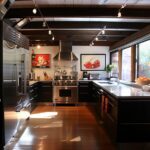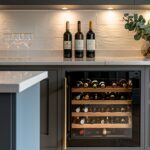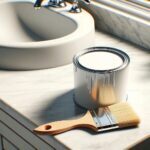Exploring Kitchen Drawer & Cabinet Types: An Informative Guide
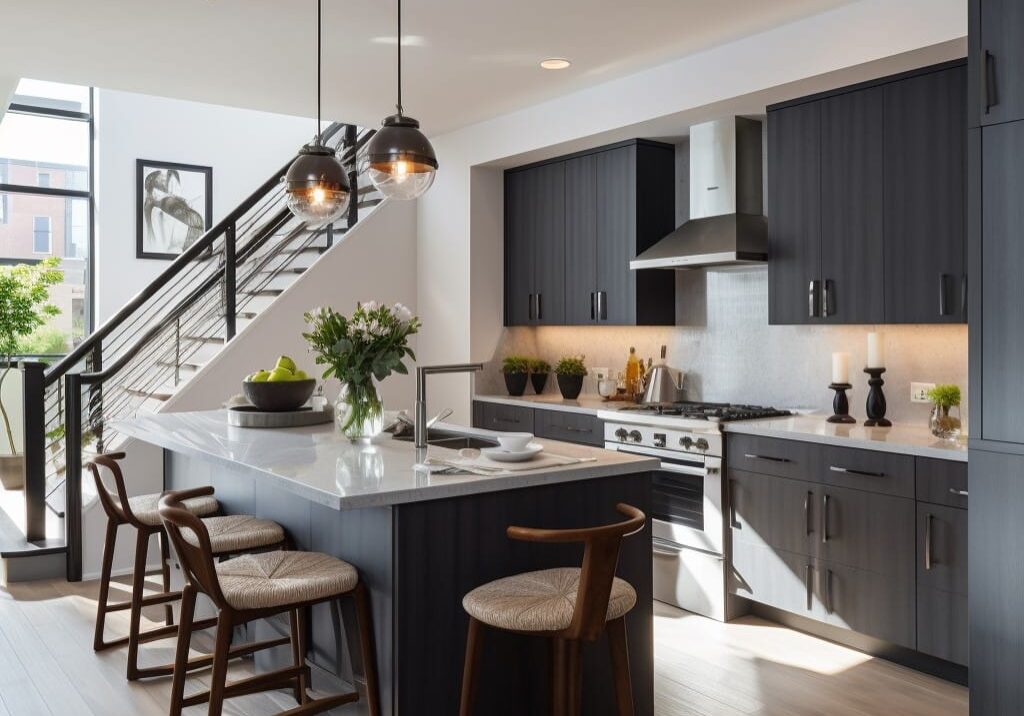
In the realm of kitchen design, drawers and cabinets are more than mere storage solutions; they are integral components that define the functionality and aesthetic of the space. Cabinets form the backbone of kitchen design, often dictating the layout and flow of the room. They are installed as base units, wall-mounted pieces, or tall pantry-style units, providing essential storage and helping to maintain an organized and efficient kitchen. Drawers, on the other hand, offer accessible and convenient storage for a range of items from utensils to pots and pans, playing a critical role in the ergonomics of kitchen use.
Materials and Construction
The choice of materials for drawers and cabinets is vast, each bringing its unique qualities to the kitchen’s design and functionality:
- Wood: A traditional and popular choice, wood offers durability and a classic aesthetic. Common types include oak, maple, cherry, and pine, each with distinct grains and colors.
- Medium-Density Fiberboard (MDF): Known for its smooth finish, MDF is an engineered wood product that’s cost-effective and can be painted in any color.
- Plywood: Valued for its strength and stability, plywood is often used in high-quality cabinetry.
- Laminate: A budget-friendly option, laminate cabinets are made by bonding a printed plastic layer to a particleboard or MDF core. They come in a variety of colors and patterns, including those that mimic wood and stone.
- Metal and Glass: These materials are less common but can offer a modern or industrial look to the kitchen.
The construction of drawers and cabinets is just as important as the materials used. This includes the joinery techniques (like dovetail or tongue-and-groove), the thickness of the materials, and the overall build quality, all of which contribute to the durability and lifespan of the units.
Design Trends
Staying abreast of current trends can help homeowners choose drawers and cabinets that are stylish yet timeless. Recent trends in kitchen cabinetry include:
- Minimalism: Sleek, handle-less cabinet doors and simple, straight lines dominate this trend, favoring a clutter-free and sophisticated look.
- Two-Tone Cabinetry: Combining two different colors or finishes in the kitchen cabinetry to create contrast and visual interest.
- Open Shelving: While not a traditional cabinet, open shelving has gained popularity for its airy feel and the ability to display decorative items.
- Eco-Friendly Materials: With a growing emphasis on sustainability, materials that are environmentally friendly and responsibly sourced are becoming increasingly popular.
Understanding the basics of kitchen drawers and cabinets is the first step in making informed decisions for a kitchen renovation. This foundation will guide homeowners in navigating the plethora of options available, ensuring a blend of functionality, style, and personal preference in their kitchen design.
Types of Kitchen Drawers
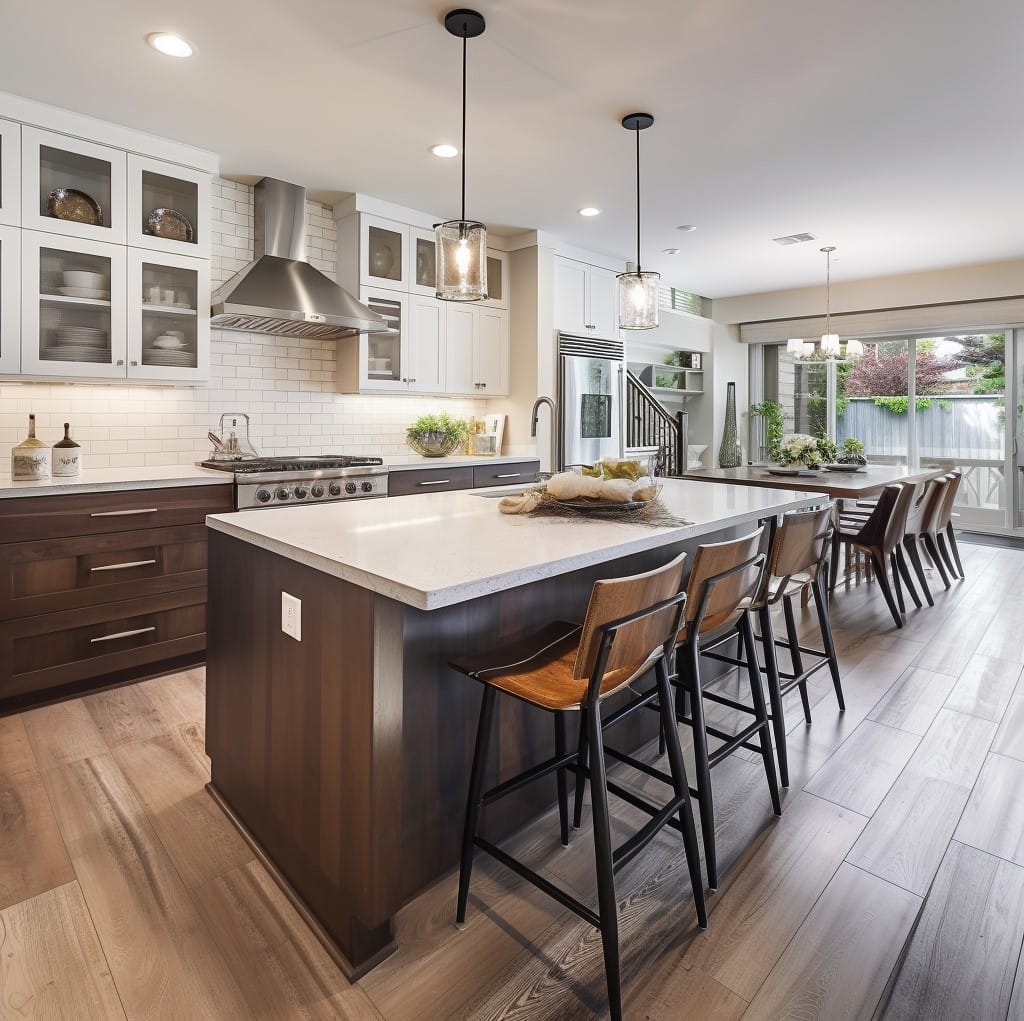
The world of kitchen drawers offers a variety of options, each designed to cater to specific storage needs and enhance the functionality of your kitchen. Here’s an overview of the different types of drawers you might consider for your kitchen renovation:
Standard Drawers
- Description: Standard drawers are the most common type found in kitchens. They usually have a simple, box-like design and are used for storing a variety of kitchen items from utensils to linens.
- Uses: Ideal for everyday items, these drawers keep essentials organized and easily accessible. They are typically installed beneath the countertop and can vary in width to accommodate different storage needs.
Deep Drawers
- Benefits: Deep drawers provide ample space to store larger items such as pots, pans, and bulky appliances. Their depth makes them more convenient than lower cabinets, where items can be hard to reach.
- Storage Solutions: Perfect for heavy cookware, these drawers often come with robust slides to handle extra weight. They can also be fitted with dividers or peg systems to keep contents neatly organized.
Slimline Drawers
- Ideal For: Slimline drawers are narrower than standard drawers and are perfect for smaller items such as spices, cutlery, or tea towels.
- Advantages: These drawers are often used to maximize space in smaller kitchens or to fill narrow gaps in the kitchen layout, ensuring every inch of space is utilized efficiently.
Corner Drawers
- Maximizing Corner Space: Corner drawers are an innovative solution to the challenge of accessing corner spaces in kitchen cabinetry. They usually come in a unique design that allows them to pull out diagonally, providing easy access to the entire drawer.
- Design and Functionality: These drawers can be designed in a variety of shapes and sizes to fit different corner configurations, making them a versatile option for optimizing storage in challenging kitchen layouts.
Customized Solutions
- Tailored Drawers: For specific needs or unique items, customized drawers can be designed. Examples include built-in spice drawers, utensil organizers, or drawers with built-in cutting boards and knife blocks.
- Benefits: Customized solutions ensure that every item in your kitchen has a designated space, contributing to a more organized and efficient cooking environment. They can be designed to fit odd-shaped items or to utilize otherwise unused spaces.
Each type of kitchen drawer offers distinct benefits and can significantly enhance the functionality and organization of your kitchen. When planning your kitchen renovation, consider a mix of these drawer types to address all your storage needs and make your kitchen space as efficient and user-friendly as possible.
Innovative Drawer Features
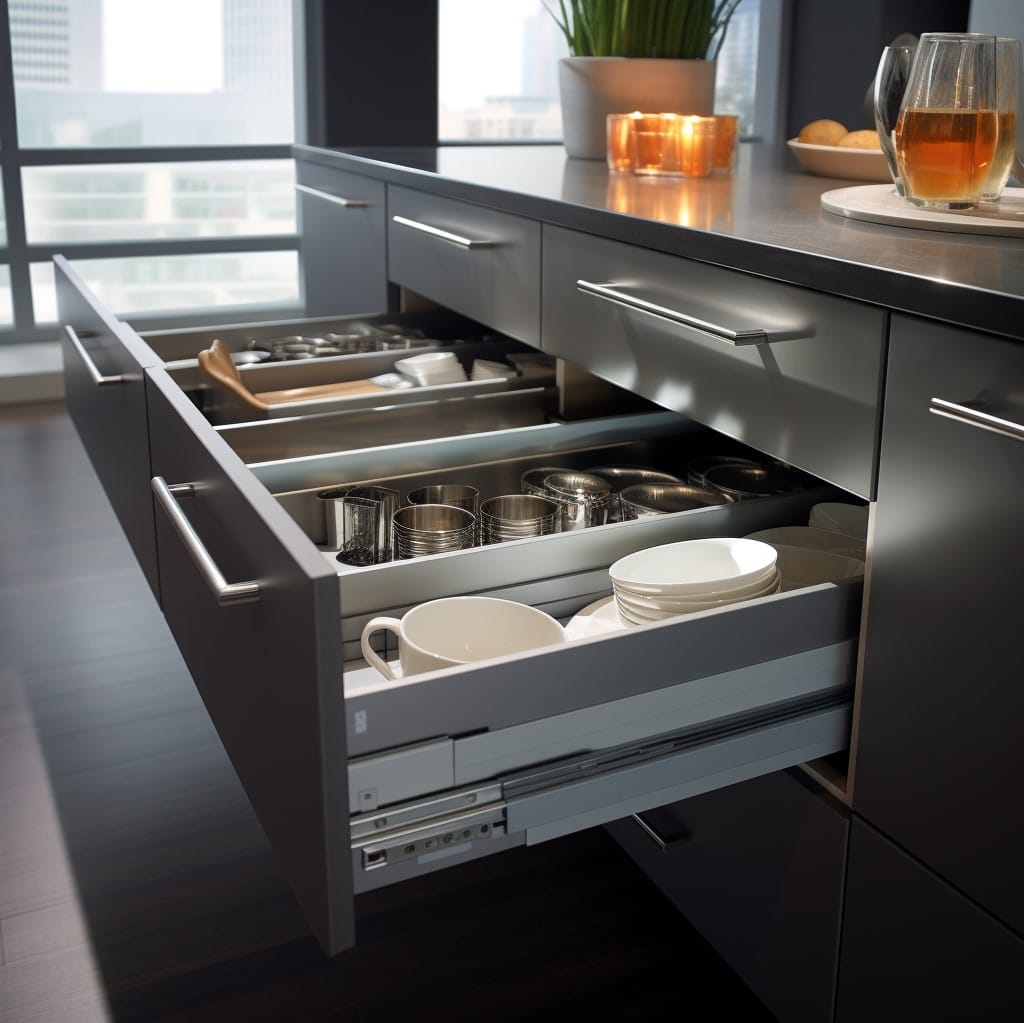
Modern kitchen design is not just about aesthetics; it’s equally focused on incorporating innovative features that enhance the functionality and user experience. In this section, we explore some of the cutting-edge features available for kitchen drawers.
Soft-Close Drawers
- Mechanism Explained: Soft-close drawers are equipped with a hydraulic mechanism that allows the drawer to close gently and quietly. When a drawer is pushed to close, this mechanism takes over, slowing down the motion and pulling the drawer closed softly.
- Benefits: This feature not only adds a touch of luxury to your kitchen but also reduces noise and wear and tear on the drawers. It’s especially beneficial in households with young children, as it prevents fingers from getting caught in slamming drawers.
Push-to-Open Drawers
- For a Handleless Design: Push-to-open drawers are an excellent choice for a minimalist kitchen design. They eliminate the need for handles or knobs, offering a sleek, uninterrupted surface.
- How They Work: A gentle push on the front of the drawer activates a spring mechanism that pops the drawer open. This feature is not only stylish but also convenient, particularly when your hands are full.
Integrated Lighting
- Enhancing Functionality and Aesthetics: Drawers with integrated lighting turn on when the drawer is opened, illuminating the contents. This is particularly useful in deep drawers or in kitchens with poor natural light.
- Types of Lighting: Options range from subtle LED strips to more sophisticated lighting solutions that can be adjusted for brightness or color temperature, adding both functionality and a dramatic effect to your kitchen.
Dividers and Organizers
- Customizing Drawer Space: Drawer dividers and organizers help keep contents neatly separated and easily accessible. This is particularly useful for utensil drawers, spice drawers, or any drawer where organization is key.
- Materials and Designs: These can be made from various materials such as wood, metal, or plastic and come in adjustable or fixed designs to suit different drawer sizes and storage needs.
By incorporating these innovative features into your kitchen drawers, you not only enhance the usability of your space but also add elements of comfort and sophistication. Whether it’s the smooth operation of soft-close mechanisms, the sleek look of push-to-open drawers, the practicality of integrated lighting, or the organization afforded by dividers, these features are designed to improve the everyday experience of using your kitchen.
Types of Kitchen Cabinets
Kitchen cabinets play a pivotal role in both the functionality and the overall aesthetic of your kitchen. There are various types of cabinets to choose from, each serving a different purpose and offering different storage solutions. Let’s delve into the most common types of kitchen cabinets you might consider for your renovation project.
Base Cabinets
- Standard Features: Base cabinets are the foundation of the kitchen layout. Positioned directly on the floor, they support the countertops and house everything from pots and pans to small appliances.
- Variations: These cabinets can come with shelves, drawers, or a combination of both. Some base cabinets are also designed to house specific appliances, like dishwashers or ovens.
- Specialty Options: Options like pull-out cabinets or corner lazy Susans can maximize space and accessibility.
Wall Cabinets
- Design Considerations: Wall cabinets are mounted on the wall and often house glassware, plates, and food items. The height and depth can vary, and they are typically positioned at eye level for easy access.
- Features: They can come with standard doors, glass doors for display, or even open shelving. The design and style can greatly impact the kitchen’s overall look, making them not just functional but also a key aesthetic element.
Tall Cabinets
- Utilizing Vertical Space: Tall cabinets, often referred to as pantry cabinets or utility cabinets, extend from the floor to the ceiling. They offer a considerable amount of storage space and are ideal for storing bulk food supplies or larger kitchen items.
- Design Options: These can include features like pull-out drawers, adjustable shelving, and organizers to make the most of the vertical space.
Specialty Units
- Corner Cabinets: Designed to optimize the often underutilized corner spaces in kitchens. Options include carousel shelves that spin to bring items to the front.
- Glass-Front Cabinets: Perfect for displaying decorative items or fine dinnerware, adding an element of elegance to the kitchen.
- Open Shelving: Not a traditional cabinet, but a popular trend. Open shelving is ideal for an open, airy look and can make the kitchen feel larger. Great for displaying items that are frequently used or decorative pieces.
- Customized Solutions: For unique kitchen layouts or specific storage needs, customized cabinets can be designed. This includes built-in wine racks, appliance garages, and more.
When planning your kitchen renovation, consider the types of cabinets that will best suit your storage needs and complement the overall design of your space. Each type offers unique benefits and can be tailored to fit your personal style and the functionality you desire in your kitchen.
Cabinet Door Styles and Finishes
Choosing the right cabinet door style and finish can dramatically influence the overall aesthetic of your kitchen. This section explores various options, helping you select a design that aligns with your personal taste and the kitchen’s overall theme.
Shaker Style
- Timeless Appeal: Shaker cabinets are known for their classic, simple design featuring a flat paneled door with a frame. This style is incredibly versatile, fitting well in both traditional and modern kitchen designs.
- Variability: While traditionally made of wood, Shaker cabinets now come in a variety of materials and colors, offering flexibility to fit any design palette.
Slab Doors
- Modern and Sleek: Slab doors, also known as flat-panel doors, are characterized by their smooth, unembellished design. They are the epitome of minimalist style and are often used in contemporary kitchens.
- Material Choices: These can be crafted from wood, laminates, or even high-gloss acrylic, offering a clean and streamlined look.
Glass-Front Doors
- Displaying Items: Glass-front cabinets are perfect for showcasing your fine china, glassware, or decorative items. They add depth and dimension to your kitchen.
- Design Considerations: You can choose from various glass styles such as clear, frosted, or textured, depending on how much you wish to display and the style you’re going for.
Beadboard and Other Styles
- Traditional Options: Beadboard cabinets, with their distinctive vertical grooves, bring a charming, cottage-style look to the kitchen. Other traditional styles include raised panel doors, which offer depth and detail to the cabinetry.
- Customization: These styles can be customized in terms of paint, stain, and hardware to match your kitchen’s theme.
Finishes and Colors
- Impact of Color Schemes: The finish and color of your cabinets can completely transform the look of your kitchen. From bright, bold colors to soft, muted tones, the options are endless.
- Types of Finishes: Options include natural wood finishes, painted finishes, laminates, and more. High-gloss finishes can create a modern look, while matte or satin finishes offer a more subdued, classic appearance.
- Color Trends: While white cabinets are timeless, there’s a growing trend towards using darker hues like navy or charcoal, or even vibrant colors for a more personalized kitchen space.
When selecting the door style and finish for your kitchen cabinets, consider the overall atmosphere you want to create. Whether you’re drawn to the simplicity of Shaker cabinets, the modern appeal of slab doors, or the traditional charm of beadboard, your choice will set the tone for your kitchen’s design. Remember, the color and finish you select will significantly impact the space’s ambiance, so choose a palette that reflects your style and complements the rest of your home.
Hardware and Accessories
The hardware and accessories you choose for your kitchen cabinets and drawers can significantly impact both the functionality and the overall aesthetic of your kitchen. This section explores various options to enhance your kitchen’s design.
Handles and Knobs
- Styles and Materials: The market offers a vast array of handle and knob styles, ranging from sleek, modern designs to classic, ornate options. Materials include stainless steel, brass, bronze, ceramic, and glass, each adding a distinct touch to your cabinetry.
- Design Impact: Handles and knobs are not just functional; they’re also key in defining the style of your kitchen. For instance, sleek, simple handles can complement a modern design, while ornate knobs might suit a more traditional setting.
Hinges
- Types of Hinges: The right hinge not only ensures the proper function of your cabinet doors but can also contribute to the style. Options include concealed hinges for a seamless look, traditional butt hinges, or decorative hinges that add a design element.
- Soft-Close Hinges: Similar to soft-close drawer mechanisms, soft-close hinges allow doors to close gently and quietly, adding a touch of luxury and preventing damage from slamming.
Pull-Out Mechanisms
- Enhanced Accessibility: Pull-out mechanisms, such as pull-out shelves or racks, make it easier to access items stored in deep cabinets. These are especially useful in base cabinets and pantries.
- Variety of Options: From spice racks to trash and recycling pull-outs, these mechanisms help keep your kitchen organized and functional, making the best use of available space.
The hardware and accessories you select for your kitchen cabinets and drawers are the finishing touches that can enhance both the look and the functionality of your kitchen. From the practicality of soft-close hinges to the aesthetic appeal of stylish handles and knobs, these details can make a significant impact on your kitchen’s overall design.
Wrapping Thing Up
In summary, the selection of suitable drawers and cabinets is crucial in any kitchen renovation. This guide has illuminated the significance of various types, from utilitarian standard and deep drawers to cutting-edge soft-close and push-to-open features, each enhancing your kitchen’s functionality and style. Whether opting for the understated elegance of Shaker cabinets or the contemporary sleekness of slab doors, coupled with the appropriate hardware, these choices greatly influence your kitchen’s overall aesthetic. A thoughtfully curated mix of these elements not only elevates the kitchen’s practicality but also mirrors your unique style, transforming the area into a pivotal space in your home.
Armed with this knowledge, you’re poised to make well-informed choices that harmonize beauty and utility, crafting a kitchen that is both enchanting and enjoyable to use. For expert assistance in bringing these ideas to life and ensuring your kitchen renovation reflects your vision, consider reaching out to Sultacon. Our expertise can guide you through the process, ensuring a seamless and satisfying transformation of your kitchen space.

